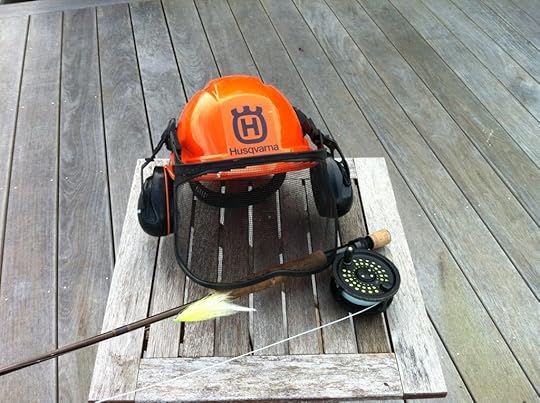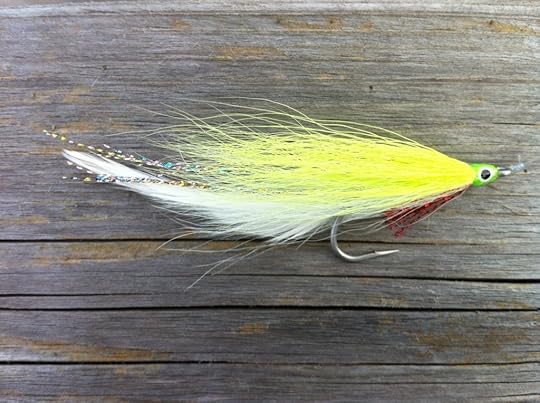Master Caster
![eG9ka3l3MTI_o_a-river-runs-through-it[1]](https://i.gr-assets.com/images/S/compressed.photo.goodreads.com/hostedimages/1382783617i/6195847._SX540_.jpg)
by John Urban
Sure, Brad Pitt looked like a master fly caster on a Montana river in the movie A River Runs Through It, but he had help.
My own casting started when I was a wee-bitty boy. First with a bait casting rod and reel. I’d stand in the backyard, a good distance from the nearest body of water, casting a hookless practice lure time and again. I got pretty good at that, but plenty of times out on the water I’d hand that bait-casting rod to my father so he could untangle the mess of line I’d created.
When I was ten or eleven, I moved up to a fly rod. At that point in my life I was taking less direction. I now wish I’d asked my father more questions about technique, but I got along and soon I was casting a heavier rod on the salt.
After all these years I must be a qualified master caster. And even if I don’t cast as well as a professional guide, I figure I have well-earned experience that I can share here at Write-On-The-Water.
First, let’s get things squared away as far as fly fishing gear. You’ve seen the images on the covers of Orvis and Patagonia catalogs. It’s good stuff, but before you get overcome by Madison Avenue, let’s focus on the practical side of fly fishing. This is, I remind you, the practice of lassoing a razor sharp hook back and forth past your head…your eyes…your ears.
So let’s start with single most important piece of equipment, something easily found in garden centers all over – a Husqvarna helmet with a face cage and ear muffs. I consider this a must for fly fishing. And after a few sample casts, most of my fishing companions do, as well.

Next, waders. Like many things in life it’s a question of compromise. On one hand, do you want to stay dry while fishing? On the other hand, do you want to sink like a stone when those babies fill-up with water following your eventual fall into the drink. Again, there’s no right answer, just personal choice.
Third, your rod and reel. My advice here is simple. Put a big wad of cash in your left hip pocket and go to a well-regarded shop. After gaining advice from the sales rep, pull a credit card from your right hip pocket to pay for your new overpriced gear. The cash? You need that, too. It’s for the fly-line, which will cost just about what you thought you’d pay for the whole damn rig.
So now we’re rigged and ready (you bought some flies, right?).
The casting part? Don’t worry. It’s kind of like golf. The only people who are really good at it keep to themselves and leave the hackers alone. But if you do want to learn how to cast, watch some videos or sign up for lessons from Joan Wulff or Lefty Kreh.
You’re just about ready for the water. However, if you’re in a sporting mood, you might even clip the barbs off your hooks. Granted, you will land fewer fish, but you will have increased ease in releasing a fish without doing it harm, and you’ll make it easier to remove that darn hook when you snag it into your hand.
On this last subject, I can depart great wisdom. I once hooked my knee so deeply with a rusty treble hook I had to cut it out with a likewise rusty knife. (Can you say tetanus shot?) Another time, I embedded one of those big barbs deep in my hand, with it a fiercely-fighting bluefish, still on the hook. I say then, trust my life experience and use barbless hooks.

And if you need some more tips after reading this post, come on over and say hello if you happen to see a guy down by the water, fly rod in hand, donning an orange Husqvarna helmet.
Share on Facebook



